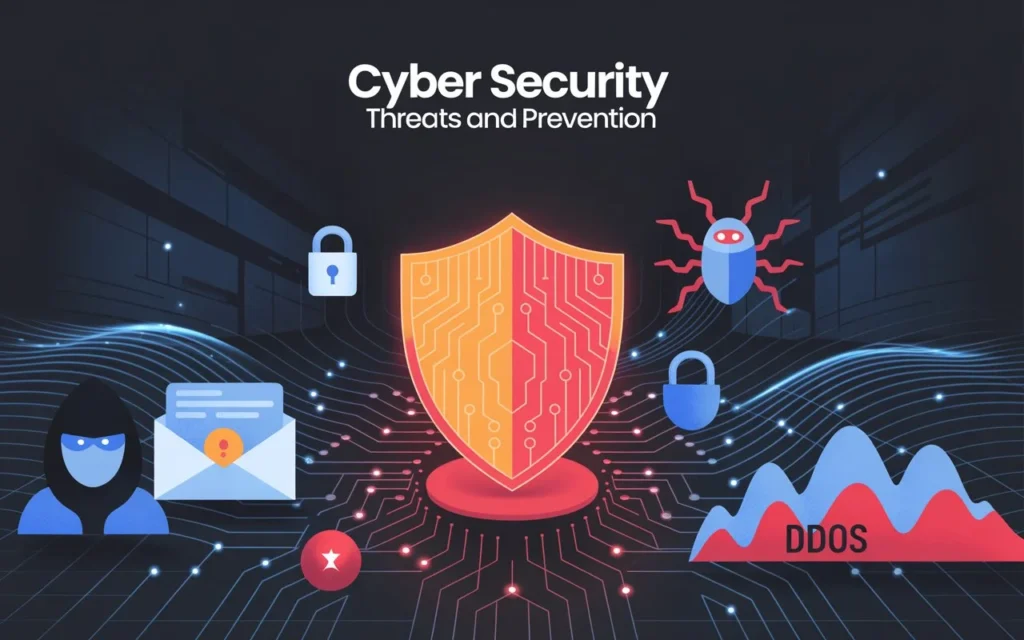Types of Cyber Security Threats and How to Prevent Them
Understanding the Scope of Cyber Threats

Key Types of Cyber Security Threats Businesses Face
1. Malware and Ransomware Attacks
2. Phishing and Social Engineering
3. Denial-of-Service (DoS) and Distributed Denial-of-Service (DDoS) Attacks
4. Insider Threats
5. Advanced Persistent Threats (APTs)

The Business Impact of Cyber Attacks
How Businesses Can Stay Ahead of Cyber Threats
Strengthen Endpoint Protection
Build a Culture of Awareness
Implement Access Controls and Monitoring
Backup and Recovery Planning
Continuous Security Monitoring
A Smarter Approach to Cybersecurity
FAQs on Cyber Security Threats
- What are the main types of cyber security threats?
The most common include malware, ransomware, phishing, social engineering, denial-of-service attacks, insider threats, and advanced persistent threats.
- What are the 3 types of cyber threats most businesses should prioritize?
Malware/ransomware, phishing/social engineering, and insider threats are among the top three due to their frequency and impact.
- What is the difference between types of cyber attacks in cyber security?
Each attack differs in method and intent. For example, phishing tricks users into giving information, ransomware locks data for payment, and DDoS disrupts systems through traffic overload.
- How can businesses in the UAE protect against cyber threats?
By combining strong security tools, staff awareness programs, access controls, regular backups, and compliance-driven monitoring strategies.
- Why is prevention more important than response?
While response is essential, prevention reduces the likelihood of breaches, saving businesses from costly damages, downtime, and reputation loss.


